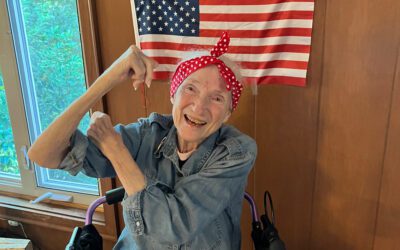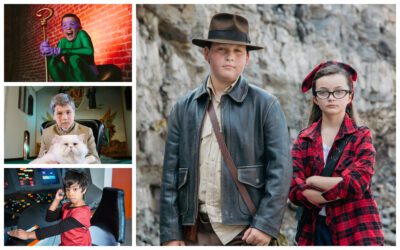[title subtitle=”WORDS Dwain Hebda
IMAGES Dwain Hebda and courtesy Bill and Bonnie Bennett”][/title]
Donald enters the room with the force of a stiff wind blowing open a screen door. The adult Newfoundland is massive from every angle; head like a cannonball, paws the size of grapefruit, chest like the gas tank of a dump truck.
And yet there is something unmistakably gentle about the jet-black beast. He’s immediately obedient to his handler and owner, Bill Bennett, despite having the physical wherewithal to tow Bill and anyone else in the room along in his wake. And he’s a big teddy bear to any guest within reach of giving him an ear scratch, too. He’s even ambivalent to the outrage he sometimes causes – unintentionally, of course –when out in public.
“When he was a puppy, he had kind of a waddle when he walked,” Bill says. “So, we named him Donald, after Donald Duck. Well, you should see the people at shows who get so mad at us. They see this fluffy head of hair and they think we named him after Donald Trump.”
Donald is just one of five big canines Bill and his wife Bonnie currently own, all of them Newfoundlands – or Newfs, as they often like to call them – and all of them current or former competitors. Ever since the 1980s when the Pennsylvania couple discovered the breed, the duo has participated in American Kennel Club dog shows and have become well-known for their expertise raising and showing champions like Donald.
“There’s nothing like a Newfoundland,” Bonnie says simply. “They’re a gentle giant.”
Despite their long history showing dogs, Bill and Bonnie don’t fit the image most people have of American Kennel Club competitors. And, considering all most people know of the activity is from the televised Westminster Dog Show in New York, it’s a stereotype that’s easy to understand: Pampered pooches preening and strutting for the delight and bragging rights of their well-heeled owners.
Bill, retired career Air Force, and Bonnie, fly squarely in the face of that picture as two regular, friendly citizens of Cabot, Arkansas, who love the camaraderie and competition that comes with showing dogs. “The biggest misconception is that the Kennel Club is for the rich and famous, and everybody’s a snot, and nobody wants to let in any new people,” Bill says. “We meet people from all over the country doing this and we’ve made some really good friends in the process.
“If you show Newfs for any length of time, you know virtually everybody that shows regularly in the United States. We know people in Wisconsin, we know people in Oregon, we know people in Washington, we know people in Florida. And not just know their name, but we know them because there’s a real social aspect.”
If you’re surprised to hear that Arkansas even has an American Kennel Club affiliated club, you’re not alone. The fact is, there are around ten clubs statewide, according to the national AKC website. Not only are there that many clubs in Arkansas, but the history of the Arkansas Kennel Club – to which the Bennetts belong and of which Bonnie is vice president – goes back nearly eighty years.
The group held its first AKC licensed show in November 1944. In that competition, owners were competing largely for War Stamps and the Best in Show winner took home a twenty-five-dollar War Bond donated by Union National Bank. The Arkansas club would become a member of the American Kennel Club (formed in 1884) seven years later and has held shows regularly until last year. In fact, the group is only twelve shy of one hundred fifty shows held during its history; its centennial competition being conducted in January 2000.
To give you an idea of how popular such competitions are, the August 2019 event held at the Arkansas State Fairgrounds welcomed more than eleven hundred entries from thirty-five states, Canada and Puerto Rico.
Clubs focus on one or more of the various elements of AKC competitive programs including obedience, tracking, agility and what most people know, conformation.
“What you see on TV, that’s a conformation show,” Bill says. “The dog is supposed to look like this, and the judge is supposed to pick the one that looks the most like this. AKC has a written standard for each breed and the one that looks the most like the standard is the one that’s supposed to win.”
As he enunciates the words, “supposed to,” Bill gives the listener a glance under raised eyebrows. “As in anything that is subjective, it is very political,” he says. “You can have a good dog and walk away empty-handed from a show. The bigger the show and the higher the class you’re in, the more political it becomes.”
Newfoundland owners happen to be scarce in Arkansas and so prior to covid-19, the couple would routinely drive within a six-hour radius of home to show their dogs. Between travel, lodging, dog-sitting for the pups back home and contest entry fees – to say nothing of the day-to-day care of the animals on an ongoing basis – it is not an inexpensive hobby, Bill says. Dog shows have even spawned their own cottage industry in pre-show primpers and professional dog handlers who work the animal in the show ring, adding another layer of expense for those owners who utilize their services.
The format of a conformation starts with the breed, for instance a pack of bloodhound entries or Dalmatians. The winners in each breed category then advance to their respective group, of which there are seven: working, herding, toy, hound, sporting, non-sporting, and terrier. The winners of each group then square off in a field of seven from which the Best in Show is awarded.
The differences in dogs within any given grouping are difficult to detect with the untrained eye. A Newfoundland like Donald, for instance, is subject to minutiae ranging from the length of his ears to the alignment of his body structure to the diameter of his chest. Show dogs are trained to stand and move in ways that show off their attributes – at Bill’s command, Donald stretches into a competition pose and raises his head.
The couple can’t put a number on how many dogs they have owned through the years; at their peak they had twenty and for several years averaged between ten and fifteen. In all that time, they have become very good at spotting the attributes of a competitor, although the quirks of personality can sometimes be a wild card that only reveal themselves with time.
“Our dog Liza didn’t like competition. Once she finished her championship run, she finished it about age two, she hasn’t been in the ring since,” Bill says. “She wants to ride in the car, but once you get there, she doesn’t want to do anything. She’s very odd in a lot of ways.”
“She is very regimented where other dogs aren’t like that,” Bonnie adds. “We had another dog, Ben, and we could not take that dog to a show by himself, he had such bad separation anxiety. But as long as he had a buddy, he was fine.”
The duo shares these stories as if reliving moments about their children, which in a way they are. Like most every child, the Bennett kids grew up and moved out, but the Bennett Newfs are always there, even as the faces and names change.
“We know a lot of breeders that as soon as the dog’s career is over, they let them go to pet homes,” Bill says. “That’s fine, but we generally keep our dogs. Around here, Reba’s nine, gonna be ten; Liza is seven gonna be eight. They won’t go anywhere.”
Learn more:
American Kennel Club: akc.org
Arkansas Kennel Club: Teresa Kuntz, teresa1@ipa.net
Fort Smith Kennel Club: William Gemmell, amfmgem@aol.com
Northwest Arkansas Kennel Club: Cynthia Luper, cyndijo505@yahoo.com




